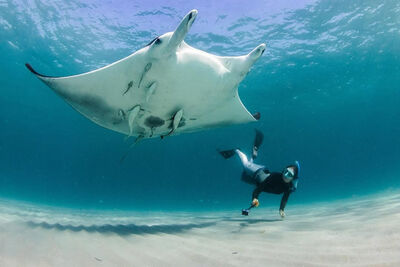Mad about mantas? You're in luck. Earlier this year, scientists officially identified the third species of manta ray: mobula yarae. This breakthrough confirms Dr Andrea Marshall's suspicion of their existence in 2009 (talk about being ahead of the curve) and reveals how evolution continues to shape our seas. Eager to learn more about this gentle giant? Read on to learn all about this new species of manta ray...

A prediction confirmed
Dr Andrea Marshall is known for making waves in manta ray science. In 2009, she split what was once thought to be one manta species into two: the reef manta and the giant oceanic manta. She also went one step further, suggesting that a third species might be lurking somewhere in the Atlantic Ocean. These suspicions were confirmed in July 2025, when the formal description of mobula yarae was published in Environmental Biology of Fishes, and the species was added to the scientific record.
Manta of the Atlantic
So, where has mobula yarae been hiding this whole time? We now know they inhabit the tropical and subtropical waters that stretch from the eastern United States to Brazil, including the Gulf of Mexico and the Caribbean Sea. This is a far wider Atlantic distribution than scientists initially expected, as early observations only hinted at their presence in Brazilian and Mexican waters.
What makes them unique?
Despite being closely related to reef and giant mantas, mobula yarae has its own distinctive features. These include V-shaped white shoulder patches, unlike the T-shaped patches of giant mantas; lighter colouration around the mouth and eyes, unlike the darker faces of giant mantas; and dark spots clustered around the abdomen, rather than spread between the gills as in reef mantas.

Evolution in action
This discovery of a new species of manta ray isn't only exciting for marine geeks - it offers scientists a rare glimpse into evolution in action. Mantas are among the most recently evolved lineages of sharks and rays, and genetic evidence shows that mobula yarae diverged from its relatives recently. Simply put, this allows scientists to observe speciation in real time. Very cool stuff.
















